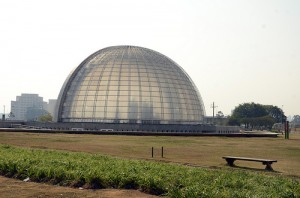
Therefore, it comes as good news that the fifth global economy is starting to make moves to boost its solar power production. The energy department of the state of São Paulo will commission this week a R$13.3 million (US$6.4 million) trial solar farm to be connected to the region’s grid. The project will be developed by São Paulo University (USP) and the regional energy utility Cesp. The solar farm will be built on Parque Villa Lobos as a tester for the capital city’s photovoltaic capability.
The farm will span an area of 10,000 square meters (107,639 sq. ft) and will feature 2,500 solar panels. The nominal capacity of the project is 500 kW and will give researchers data about the solar potential of the city.
The project is designed to last three years and will help expand a solar map of the country. The farm will be linked to the grid via the SmartGrid system, which is operated by Operador Nacional do Sistema Elétrico (ONS).
The farm is part of a wider plan approved in 2011 by the country’s energy agency Aneel, whose goal is to make solar power more economically feasible in the country, with investments that add up to R$400 million (US$192 million). The aim is to reduce by one third solar powers megawatt/hour cost, which currently stands at R$300 (US$144). If it goes down to R$100 (US$48), it will be on pair with the cost of wind energy.
Besides the small farm, the project includes a micro-network of solar power generation for the park, with panels that will be visible to the public. Six posts will be spread across in the park to provide solar-powered Wi-Fi internet. Other solar panels will be installed on the park’s main gate and head office. The idea is to educate the public about the mechanisms of renewable power.
Source: Estadão





